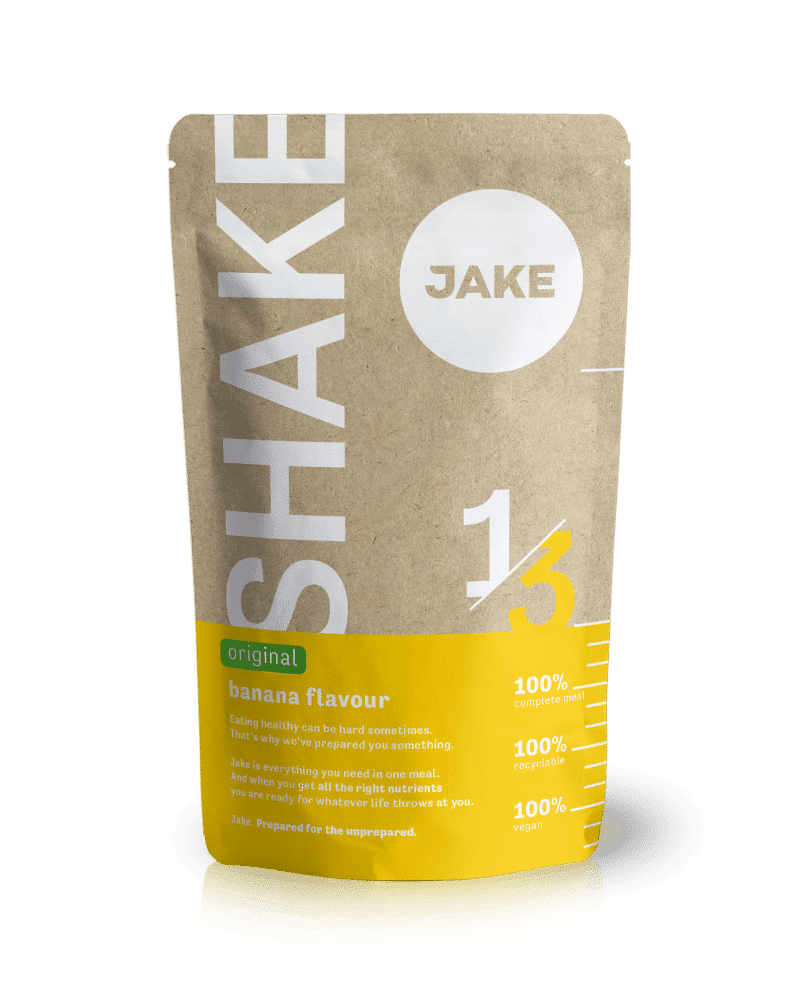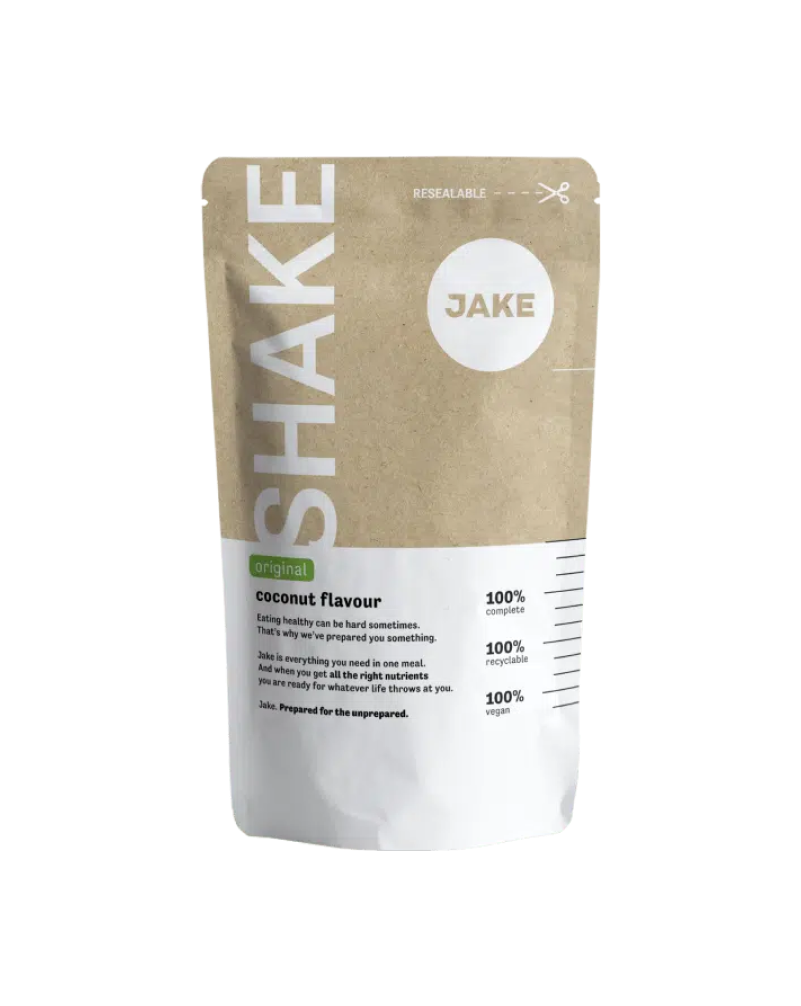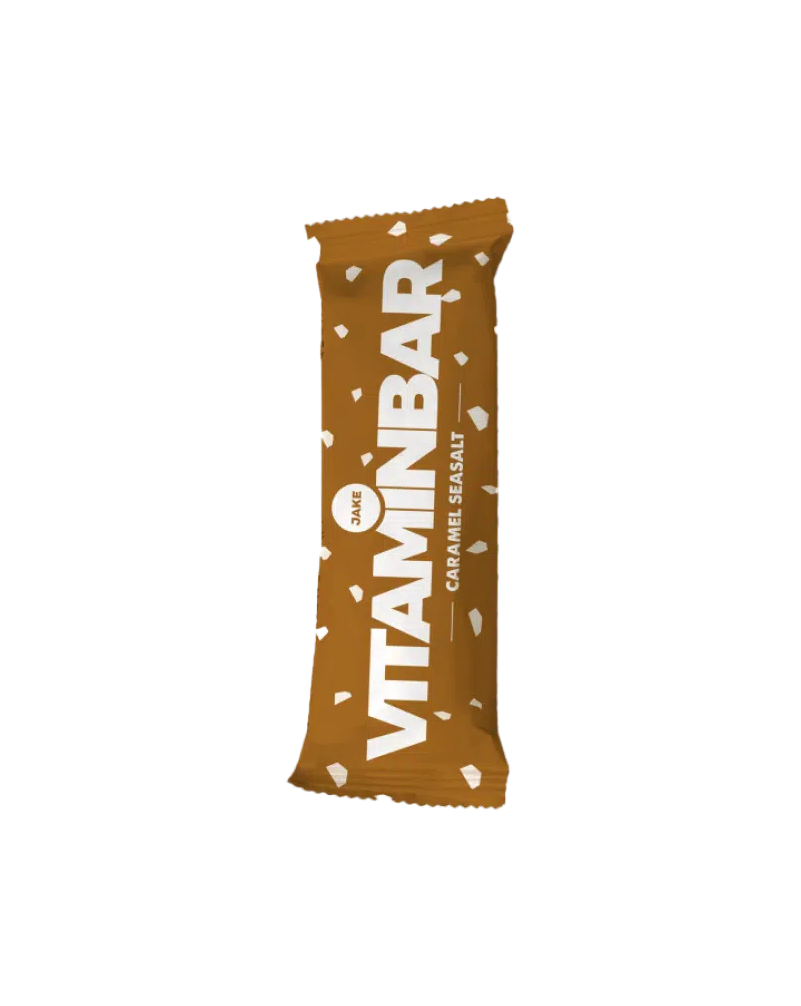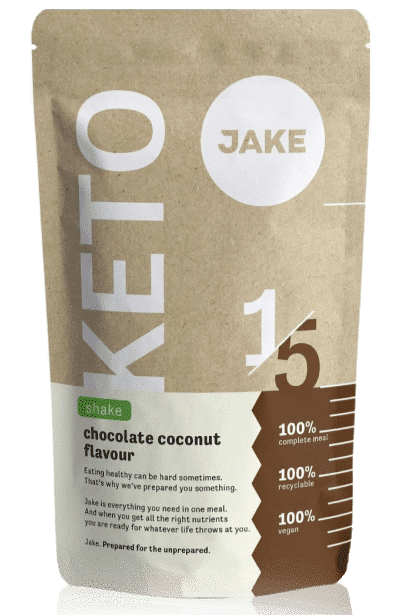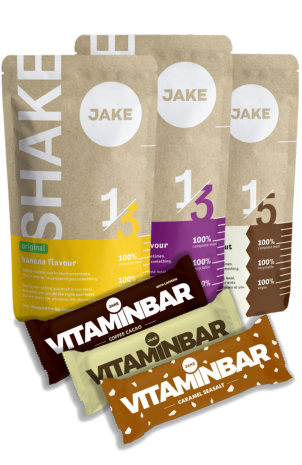4-minute read•July 11th, 2018
Whether you’ve heard about vitamin B5 before or not, the truth is – you can’t miss it. It’s in almost every food source and in every cell of your body! Its role in health is quite diverse. From turning nutrients into energy, to the contribution of normal mental performance. Below is what you should know about it.

Short on time?
Names: Vitamin B5, pantothenic acid
Best known for: Energy metabolism and support in stress situations
Good sources: Found in almost all foods. Most abundant in beef, chicken, organ meet and whole grains.
Adequate intake(AI): 5 mg per day. No maximum intake level has been established.
Vitamin B5 (pantothenic acid) in Jake:
Jake Light and Original: 33% of AI
Jake Sports: 25% of AI
Vitaminbars: 26% of AI
What is vitamin B5?
Vitamin B5 is best known as pantothenic acid. Similar to the rest of the B-complex vitamins, it’s water-soluble. This means that it’s not stored in your body. Any excess amounts are excreted through the kidneys. As a result, it’s important to ensure a regular intake of vitamin B5 in your diet.
Health benefits of vitamin B5 foods
The main function of vitamin B5 is the production of coenzymeEnzymes are substances, mostly proteins, that act as catalysts, speeding up chemical reactions within the body. A coenzyme helps enzymes do their job. A, or CoA. CoA is present in every cell in your body and activates around 4% of all known enzymes. It helps the conversion of nutrients into energy and its transportation to different tissues and organs.
The key functions of vitamin B5 foods are:
- Helping convert the food you consume into energy.
- Supports in stress situations
- Has a beneficial effect on the reduction of tiredness and fatigue
How much vitamin B5 do you need?
A healthy adult requires 5 mg of vitamin B5 per day.This amount reflects the adequate intake (AI) according to the European Food Safety Authority (EFSA). An AI is the amount assumed to ensure nutritional adequacy. Think of it as a cup of shiitake mushrooms, or a portion of beef liver.
Vitamin B5 is also called pantothenic acid. This name derives from the Greek word “pantos”, meaning “everywhere”, and it’s hardly a surprising choice – vitamin B5 can be found in all living cells. It is also present in almost all foods.
Vitamin B5 in foods
Vitamin B-complex is found in a wide variety of foods. It is important that we eat enough of these foods so that our bodies get enough vitamins for good health. If you are not sure which foods contain vitamin B-complex, don’t worry. We have compiled a list of some of the best sources of this important nutrient.
Vitamin B5 is present in almost all plant and animal foods. It’s most abundant in beef, chicken, organ meat, whole grains and certain vegetables. Each of these foods provides a different mix of B-complex vitamins. It is important to eat a variety of these foods so that you can get all the nutrients your body needs.
Here are the best sources of foods that are high in vitamin B5:
| Food | AI (%)* | Vitamin B5 (mg) |
|---|---|---|
| Beef liver (85 g) | 166% | 8.3 |
| Shiitake mushrooms (65 g) | 52% | 2.6 |
| Sunflower seeds (30 g) | 48% | 2.4 |
| Egg (one, whole) | 15% | 0.75 |
| Milk (200 ml) | 10% | 0.5 |
* Based on the adequate intake (AI) established by EFSA for healthy adults (5 mg/day)
When you’re cooking, canning or freezing your food, it loses between 20 – 80% of its vitamin B5 content. Where possible, try and consume raw foods, like sunflower seeds, to prevent loss of vitamin B5.
What if you’re not getting enough vitamin B5?
Vitamin B5 deficiency is extremely rare, due to the fact that it’s present in so many foods. Basically, only people with severe malnutrition are at risk. However, since vitamin B5 deficiency in these cases tends to occur in combination with deficiencies in other nutrients, it’s difficult to single out the symptoms due to insufficient vitamin B5 alone.
Some of the known consequences of vitamin B5 deficiency include numbness and a burning sensation in the hands and feet. Additional symptoms are headache, fatigue, irritability, restlessness and disturbed sleep.
How much vitamin B5 is too much?
There are no known negative effects associated with excessive consumption of vitamin B5. No tolerable upper intake limit (UL) has been established.
Take-aways
These three points about vitamin B5 are important to remember:
- You need vitamin B5 for energy production and transportation in the body.
- You’ll find vitamin B5 in almost all foods. The best sources include beef, organ meat, whole grains and some vegetables.
- You’re unlikely to become vitamin B5 deficient, unless you suffer from severe and prolonged malnutrition.
Afraid to miss out on essential nutrients your body needs? You can always take our Jake meal replacement shakes or one of our delicious meal replacement bars.
Read more Jake blog.
